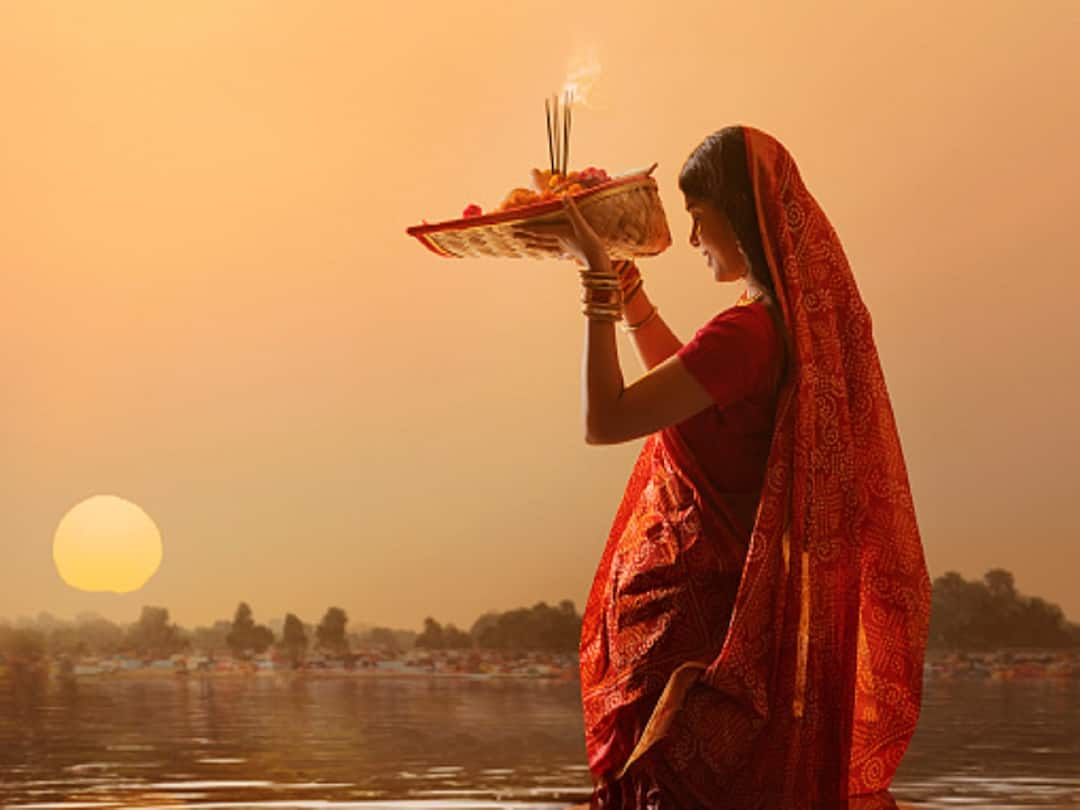Chhath Puja 2022: Why Surya Arghya Is So Significant In Chhath Puja
Chhath Puja Surya Arghya: Chhath mahaparva is a four-day annual festival that takes place six days after Diwali. Arghya to Chhathi Maiya and Surya Devta is considered auspicious during this festival.

The Chhath mahaparva is an annual four-day festival held six days after Diwali, or on the sixth day of the Hindu month of Kartik. The festival is mailny held in Bihar, Jharkhand, and Eastern Uttar Pradesh. During this festival, devotees observe a nirjala vrat (fasting without water) and offer Arghya to Chhathi Maiya and Surya Devta. During Chhath, it is believed that deities grant all of the devotees' wishes.
The third day of Chhath Puja, also known as Sandhya Arghya, is when devotees fast from drinking water. On this day, devotees pray and make an offering (Arghya) to the setting Sun. Fasting on this day entails abstaining from all liquids and water for the entire night.
On the fourth day of the Chhath festival, arghya is offered to the rising sun, devotees offer prayers and offerings to the sun at sunrise.
People perform the Arghya ritual by placing fruits, soups, and a lit lamp in a bamboo basket and offering them to the setting sun. Bamboo baskets are particularly significant in this festival. Chhathi Maiya is also given prasad such as banana, Thekua, Malpua, Kheer-Puri, dates, semolina pudding, rice laddus, and other items. On this day, devotees dress in new clothes.
People pray to the Sun God and sing Chhathi Maiya songs at night after offering Arghya in the evening on Shashthi. Following that, devotees visit the ghats early in the morning on Saptami (day 4), before sunrise.
ALSO READ: Chhath Puja 2022: Chhath Puja Surya Arag Time In The Morning And In Evening
Before sunrise, they arrive at the ghat and offer Arghya to the rising sun, pray to the Sun God, and then break the long and arduous fast.
Pratihar, Dala Chhath, Chhathi, and Surya Shashthi are all names for the Chhath Puja.
What Is The Significance Of Surya Arghya In Chhath Puja?
The Sun is revered in Hinduism as a healer of many severe health conditions, as well as a source of longevity, prosperity, progress, and well-being. The festival is celebrated by the people by following a strict four-day routine. Fasting, including abstinence from drinking water; holy bathing, offering prayers to the rising and setting suns, and meditating by standing in water for long periods of time are among the rituals.
Chhath Puja, like any other Indian festival, is steeped in mythology. The rituals of Chhath Puja are mentioned in the epic Mahabharata, where Draupadi, the Pandavas' wife, is depicted as performing similar religious observances. According to popular legend, the Pandavas and Draupadi performed the Chhath ritual on the advice of the noble sage Dhaumya in order to reclaim their lost kingdom of Indraprastha (now Delhi).
The festival also has an interesting history: the sages used to abstain from food and channel the Sun's energy toward themselves in order to survive. Another mythological story has Rama and Sita praying to the Sun god after returning to Ayodhya after a 14-year exile (vanvasa).
The Surya Sashthi fast is characterised by strict fasting and abstinence from water in honour of the Sun god. This fast aids in gaining focus, prosperity, happiness, and physical and mental well-being.






































